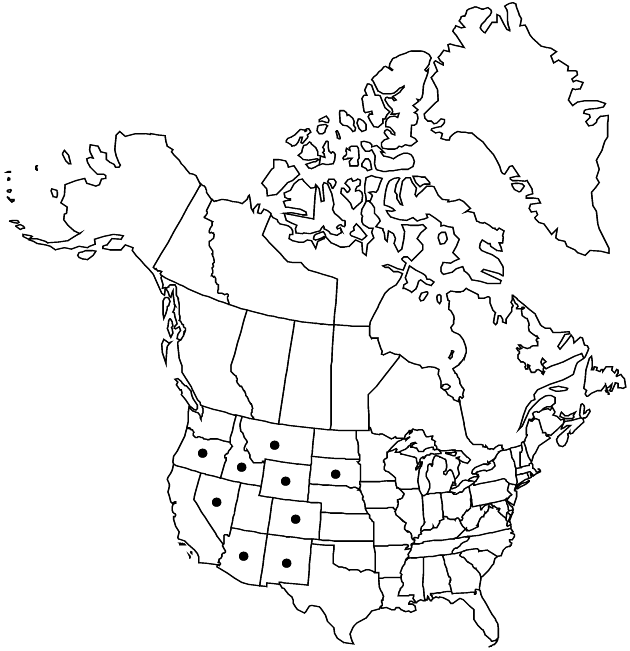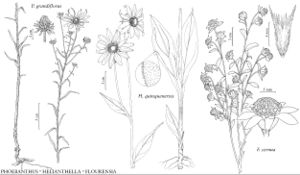Helianthella quinquenervis
Proc. Amer. Acad. Arts 19: 10. 1883.
Plants (30–)50–150 cm. Cauline leaves: largest proximal to mid stems; blades usually 3– or 5–nerved, elliptic or ovate-lanceolate to lanceolate, 10–50 cm, faces sparsely hirsute or glabrous. Heads usually borne singly, ± nodding. Involucres hemispheric or broader, (25–)40–50 mm diam. Phyllaries (outer sometimes ± foliaceous) ovate to lanceolate (subequal to unequal, margins ciliate). Paleae scarious, relatively soft. Ray florets (13–)21; (corollas bright yellow) laminae 25–30(–40) mm. Disc corollas yellow. Cypselae strongly compressed, narrowly obovate (margins ciliate, faces strigose); pappi of 2 ± subulate scales plus 2–4+ shorter scales.
Phenology: Flowering Jun–Aug(–Oct).
Habitat: Moist meadows, aspen glades
Elevation: 1400–3600 m
Distribution

Ariz., Colo., Idaho, Mont., Nev., N.Mex., Oreg., S.Dak., Wyo., Mexico (Chihuahua, Nuevo León).
Discussion
Helianthella quinquenervis grows primarily in the Rocky Mountains, Great Basin ranges, and Black Hills.
Selected References
None.
